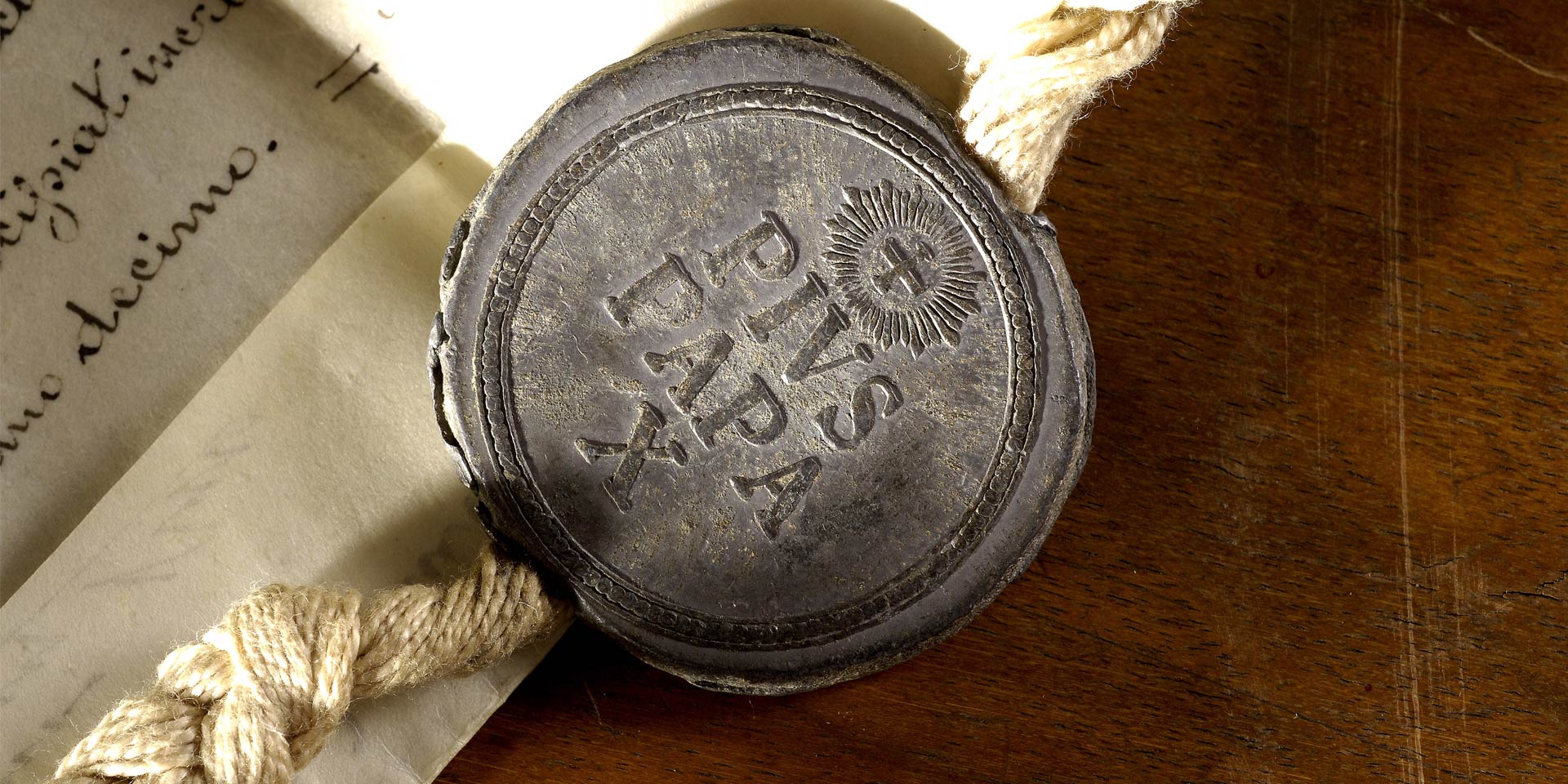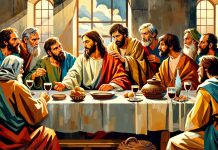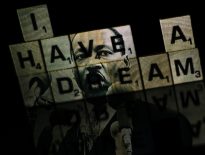In late 2015, famed neurosurgeon Ben Carson, who was running for the Republican presidential nomination, became the target of scrutiny and innuendo from some in the media, who used the moment to turn his religious identity on its head. Ben Carson is a Seventh-day Adventist, and people wanted to know how Adventism influences his thinking. Carson lost the election race but won a cabinet position in the Trump administration.
Journalist Cenk Uygur of TYT (The Young Turks Network), an American network of online television channels, did a brief exposé on Ben Carson’s “End Times Beliefs.” Using interviews with Carson and statements by a speaker at the Seventh-day Adventist General Conference in San Antonio (2-11 July 2015), Cenk argued that Adventists identify the beasts of Revelation 13 with Rome (Catholicism) and the United States, respectively, which together are plotting to bring about a world order by introducing the universal cult of the “beast” and imposing the “mark of the beast” (a Sunday law). The theory that right-wing political ideologies will eventually dominate the world stage is seen as a paranoid scenario by the liberal Cenk, who, tellingly, greets his internet users with images of two beasts side by side: (1) the tyrannosaur with the “Sacred Heart of Jesus” on its chest, and (2) the image of Ben Carson, who is actually a right-wing candidate.
Featuring Carson’s face as a saint against a mosaic backdrop, Dr Jay Michaelson, a liberal American Jewish writer and LGBT activist, headlines in bold letters in The Daily Beast: “Ben Carson’s church believes the U.S. government will team up with the Antichrist.” Again, the Revelation 13 scenario as seen by Adventists is challenged.
The interviews with Carson about his religion and beliefs are interesting as a separate topic, but in this material it is worth considering the apparent or real enormity of the Adventist claim (with or without Carson) about the identity of the first apocalyptic beast.
What does “Antichrist” mean?
Throughout history, various historical figures or institutions have been suspected of being the Antichrist. But perhaps the most sensational and enduring identification has been that applied to the Papacy by almost all anti-Catholics in the second Christian millennium. Is this interpretation biblical and honest? And is it still relevant?
“Antichrist” is a word used by Christians to describe Christ’s chief rival, the deceiver of mankind, foretold in the prophecies of Daniel (chapters 7-8 and 11-12), Paul (2 Thessalonians 2:3-12), and John (1 John 2:18; Revelation 13:1-10).
The Apostle John used the term “Antichrist” in three ways. First, he used the term in the plural to refer to the opponents of Christianity: whether Jewish or Gentile opponents who denied the Messiahship and divinity of Jesus, or Judaising Ebionite Gnostics who denied the divinity of Jesus (1 John 2:22-23; 4:15; 5:1, 9-11; cf. John 1:1-5, 14), or the Docetic Gnostics who denied the real humanity of Christ (1 John 4:2) because they were opposed to the commandments of God (1 John 2:3-11; 5:1-5; 2 John 1:6-7) and hostile to the apostles and their Christian brethren (3 John 1:9-11). Secondly, John used the term in the singular to refer to a spirit: the Evil One, in whom the whole world resides (1 John 4:3; 5:19-20). And third, he used it in the singular to identify a future human character (1 John 2:18).
Traditionally, Christians refer most often to the latter meaning—the prophetic use of the title “Antichrist.”
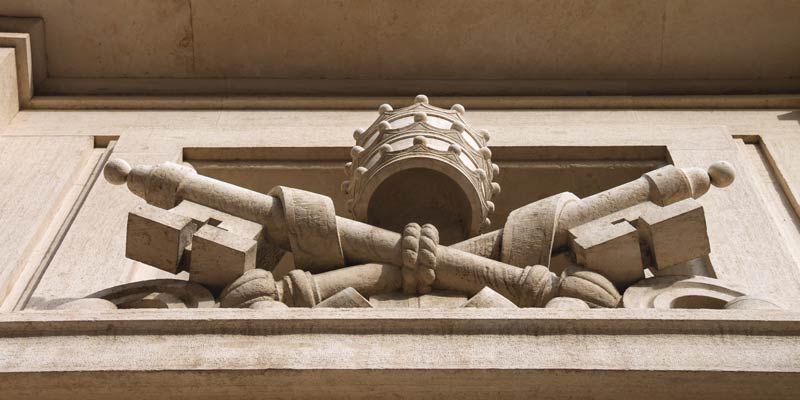
Could the Pope be the Antichrist?
According to the Catholic Encyclopaedia, in an article on “Antichrist,” the Catholic Encyclopaedia confirms that the Greek particle “anti” has the meaning of “vice-” or “pro-” when used as a prefix to titles (e.g. antibasileus = viceroy; anthoupatos = proconsul). So what would be the meaning of antichristos? The source goes on to say that “following mere analogy one might interpret antichristos as denoting one resembling Christ in appearance and power; but it is safer to define the word according to its biblical and ecclesiastical usage.”
Thus, the encyclopaedia discusses the biblical use of the term (in the letters of John, in Revelation, in the letters of Paul, in the gospels, and in the Book of Daniel), then the ecclesiastical use, from the patristic era to modern times. Tangentially, there is a preference for the old interpretation of the Antichrist in the future tense, identified as a Jew of the tribe of the Danites[1]. Yet the most discussed theory is the classical Protestant identification of the Antichrist with the Papacy. Cardinal Newman[2] (†1890), who wrote two dissertations on the subject, is brought to the defence. One of the dissertations is entitled The Protestant Idea of the Antichrist, in which he quotes a long list of Protestant reformers and theologians who claimed that the Antichrist was the papal system.
Newman attacks the theory that the Pope is the Antichrist and makes the following critical remarks, which I will list, summarise or quote where appropriate, and then formulate a reply:
Newman: If part of the Church were antichristian, then the whole Church, including its Protestant branch, would be antichristian.
A: Rome has often blamed the Reformation on the devil. Does this mean that the rest of the Church is of the devil? Scripture says that the Antichrist will appear in the Church as a result of the great apostasy (i.e. the deviation from the apostolic Christian faith[3]), and that he will take up residence in the temple of God, i.e. the Church[4]. Apostasy certainly affects the Church, but not entirely, for only those who reject the truth are deceived (2 Thessalonians 2:10).
And if only twelve, or even two or three (Matthew 7:14-15; 18:20; Luke 12:32) remained on the side of truth, that would still be considered a church. Only heavenly statistics count (Hebrews 12:23). Even if the devil himself were to enter the church, as he once entered the heavenly council (Job 1:6; 2:1), this would not affect the identity of the true invincible church (Matthew 16:18), but only the apostate part—whether minority or majority (2 Timothy 4:3-4; Revelation 12:4), and regardless of its historical denominations and claims.
Newman: The theory that the Antichrist is the Pope comes from the Albigensians, the Waldensians, and the Fraticelli. Are these the true sources “from which the Church of Christ is to receive the true interpretation of the prophecies?”
A: This arrogant and cynical argument could not have been made by a genuine Catholic in the way it was made by Newman, a renegade Protestant. The origin of a theory is irrelevant. If it is correct, it makes no difference whether it was formulated by a saint or a sinner. These “separated brethren,” as the Vatican would call the Waldensians and all the others today, have suffered enormously for centuries. The atrocities to which they were subjected, at the initiative of the papacy, or with the papal blessing, were confessed by Popes John Paul II and Francis I as sins of the Church’s past.
Newman: Supporters of the identification of the Antichrist with the Pope have made some mistakes in quoting Catholic writers. For example, when “Pope Gregory the Great asserted that whoever claimed to be the universal bishop was Antichrist,” he was actually referring to the forerunner of Antichrist.
A: Protestant apologists have probably made such mistakes. Misunderstanding and misquoting are common human errors, also to be found among Catholics.
Newman: The motivation of the Protestants in arguing that the Antichrist is the Pope was their need “to find some popular answer to popular and intelligible pretensions” made by the Church of Rome in favour of its divine authority.
A: The arguments for the divine authority of the Church of Rome have never been universally accepted in the Church. There have always been those who have challenged them, even at the cost of their lives, both in the East and in the West. Rome’s most “persuasive” arguments were the antiquity of tradition (which brings popularity) and moral, physical, and other constraints.
Newman: “Warburton, Newton, and Hurd,[5] the advocates of the Papal-Antichrist theory, cannot be matched against the saints of the Church of Rome.”
A: Much depends on how we define and measure holiness. Newman names three Protestant writers whom he probably considers the least worthy of comparison with Catholic saints. One could write a huge multi-volume work on the subject. There were martyrs on both sides; saints and sinners were everywhere. Statistics are probably impossible.
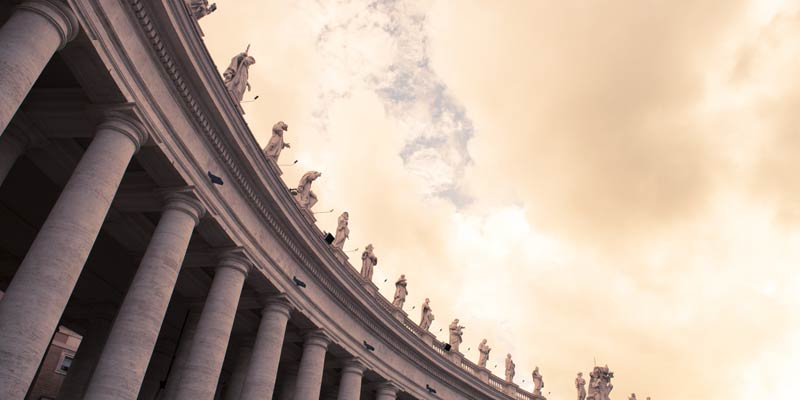
Newman: “If the Pope be Antichrist, those who receive and follow him cannot be men like St. Charles Borromeo, or Fénelon, or St. Bernard, or St. Francis de Sales.”
A: This argument could be reversed: if the Pope were not the Antichrist, the Roman doctrine could not have produced monsters of hatred and bloodshed like Simon de Monfort, Torquemada, Catherine de Medici, or utterly inhuman or ridiculous popes.
François de Sales (†1622), known as the “Gentleman Saint,” was distinguished by a particular nobility and devotion, and was a man preoccupied with loving God. Bishop of Geneva and great mystic, he was a gentle missionary among the Calvinists. It could not have been otherwise in a Protestant majority. Would he have been considered a saint if he had been a Protestant with the same spiritual qualities?
Bernard of Clairvaux (†1153) founded a monastery, was a theologian, contributed politically to healing a papal schism, denounced Abelard as a heretic to the pope, and through his preaching drove the West into the Second Crusade. Enough to be a saint?[6] I believe it is too little on the one hand and too much on the other.
What acts of holiness did Carlo Borromeo (†1584) perform, apart from the fact that his uncle, Pius IV de Medici, made him a cardinal, statesman, and superior of three monastic orders? Or the fact that he joined forces with Ignatius of Loyola to persecute Protestants and set up schools of indoctrination?
Why should Fénelon (†1715) be worthy of mention? Perhaps because he wrote The Adventures of Telemachus. Otherwise, he was a fanatical, inhuman mystic, like so many false saints. A “missionary” in league with the forces that unleashed terror on the Huguenots after the revocation of the Edict of Nantes. This opponent of the Protestants and the Jansenists, a participant in the abuses of Rome, is seen by some as a defender of human rights,[7] which, according to Fénelon, were as follows: “To be obliged to do good is always an advantage and that heretics and schismatics, when forced to apply their minds to the consideration of truth, eventually lay aside their erroneous beliefs, whereas they would never have examined these matters had not authority constrained them” (the author’s emphasis).
Newman: “If the Church must suffer like Christ, and if Christ was called Beelzebub, the true Church must expect a similar reproach; thus, the Papal-Antichrist theory becomes an argument in favour of the Roman Church.”
A: If the defining characteristic of the true Church is the suffering caused by slander and persecution, it remains to be seen whether the Roman Church has suffered the most over the centuries, or whether it has remained at the top of the list of persecutors. There have been quite a few Catholics who have been insulted and martyred by Protestants, but the comparison does not hold water. And suffering in itself is no proof of righteousness. Witches also suffered. So did Jews (including those who became Christians) and many others.
Newman: “The gibe, ‘If the Pope is not Antichrist, he has bad luck to be so like him,’ is really another argument in favour of the claims of the Pope; since Antichrist simulates Christ, and the Pope is an image of Christ, Antichrist must have some similarity to the Pope, if the latter be the true Vicar of Christ.”
A: This last argument needs no response. Indeed, the Papacy is very unlucky to resemble whom it should not.
Let’s see if better arguments have been found in the meantime in defence of the Papacy.
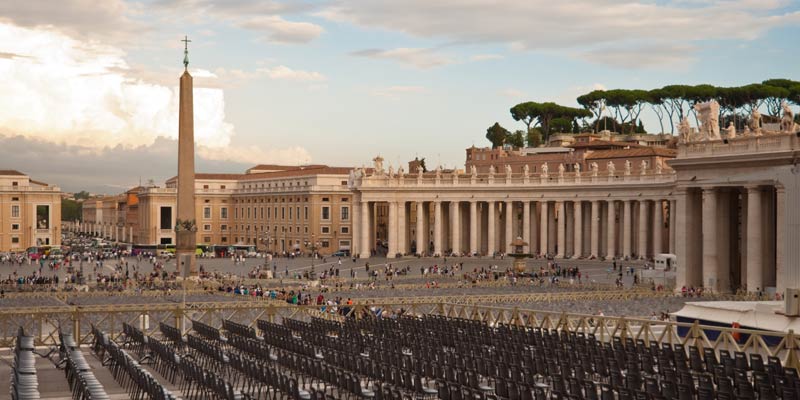
Schirrmacher’s Criterion. In the editorial section of the well-known non-denominational evangelical newspaper The Christian Post, an article appeared on 14 October 2015 under the inflammatory headline, “Inside the Vatican Synod on Family: Is Pope Francis the Antichrist? (Day 11).”
Such questions no longer seem relevant today, and when they are asked they seem to be nothing more than political jokes or satire. Yet the article was written by Dr Thomas Schirrmacher, president of the International Council of the International Society for Human Rights, secretary general of the World Evangelical Alliance and chair of the Theological Commission. He is an expert on Catholicism and a friend of the Roman Church.
After describing the circus of tensions between conservatives and Catholic liberals over the issue of the day—marriage and family—Schirrmacher continues: “But we Evangelicals have our own media circus.” And so he introduces the second part of the article, in which he discusses claims on some evangelical blogs that Pope Francis is the Antichrist.
Several cardinals and bishops asked Schirrmacher what he thought of these Protestant claims. And Schirrmacher answered nicely, like a Protestant, with his hand on the Bible: “My answer was, that reading 1 John 2:18; 2:22; 4:3; 2 John 1:7 and Revelation 13:17-18 proves to me that the Pope is not the Antichrist and that I believe in Sola Scriptura.” Schirrmacher then explains to the reader the logic of this argument. The Pope cannot be the Antichrist because John says that the Antichrist is one who “denies that Jesus is the Christ” and denies that “Jesus Christ came in the flesh.” Is it true that the Pope denies the Messiahship or the Incarnation of Jesus Christ? Schirrmacher answers correctly: No. And he argues: Benedict has written three volumes on Jesus Christ, God incarnate. If you’re looking for an Antichrist who denies Jesus Christ, Islam would be a much better candidate. But if that is the criterion, why didn’t Schirrmacher name Israel, or the Dalai Lama and his followers? Or, why not Richard Dawkins? None of them believe that Jesus is uniquely God, Lord and Saviour of all mankind.
Considering that research suggests that the origins of Islam are closely linked to certain Jewish or Judaising Gnostic sects[8], it can be said, according to John’s criteria, that Islam is to some extent an Antichrist religion. However, the same research shows that there were “Christians” who denied the deity or messiahship of Jesus. Such Christians still exist today. Liberal theology, which makes Jesus a mere historical revolutionary, is similar. At the other end of the Christological spectrum were the Gnostic Christians who accepted Christ as a divine being, albeit derived, but not as God incarnate. He was only apparently human, the Docetists claimed. John gave them all the less academic title of Antichrist.
According to the criterion mentioned by Schirrmacher, the bishops of Rome never denied the divinity, the messiahship or the humanity of Jesus. On the contrary, it was Pope Leo the Great who formulated the Christology which was confirmed at Chalcedon (451) and which we all accept today, with the exception of some Eastern Churches. However, when we go into the details, things get complicated. Good Christians who believe in the messiahship, divinity, and humanity of Jesus differ among themselves in their doctrine of the reality and depth of Christ’s incarnation. For example, while some Orthodox and Protestant theologians[9] affirm that Christ’s incarnation took on the actual, sinful nature of a fallen (but sinless) human being, Catholic doctrine affirms Christ’s incarnation in a flawless, immaculate nature[10] inherited exclusively from the Virgin Mary. Some see in this conception of the Catholic theology of the Incarnation a virtual docetism, the mark of the Antichrist. Yet it is not only Catholics who have the “mark” of this controversial incarnation, but also Protestant Orthodoxy. Such a criterion for identifying the Antichrist is too subtle even for theologians, so we will ignore it.
Conversely, the criterion to which Schirrmacher refers in 1 John 4:2—pointing out that it is based exclusively on Sola Scriptura and not on any interpretive tradition, be it Protestant— is extremely broad and inadequate today.
Did John have in mind a universal and eternal criterion for recognising true Christians? If this is the case, then we can breathe a sigh of relief, for all Christians confess the incarnate Christ. In John’s day, when Christians risked their lives to confess a God incarnate, this criterion was more relevant. Nowadays, however, when Christianity is so popular, when this confession costs nothing and has no practical consequences, the whole Christian world can sing it in unison. But Scripture teaches us that faithful profession is not a sufficient criterion of Christian authenticity. Jesus was confronted at every turn by demons who cried out the correct creed: “I know who you are—the Holy One of God!”, or “You are the Son of God!” (Mark 1:24, 34; Luke 4:34, 41).
Evil spirits are deceptive, they are enlightened and refined, they surprise us with their nimbus while we expect horns (2 Corinthians 11:13-15). The devil insists on working with the apostles (Acts 16:16-18). He tempted Christ and his disciples to accept the offer of all the kingdoms of the world (Matthew 4:8-10).
The classic example of Christian profession is the profession of Peter (“the rock”), the representative of the apostles on whom Jesus builds his church and to whom he symbolically gives the keys of the kingdom[11]: the Word of God and the Holy Spirit (Luke 11:52; John 20:22-23). After only a few minutes, however, the great doorkeeper, the “rock” of righteous faith, is confronted by Jesus with the harsh invective: “Get behind me, Satan! You are a stumbling block to me” (Matthew 16:23). This was because the apostle had reprimanded Jesus for having just revealed the prospect of the great sacrifice. And if Jesus was going to die, who was going to succeed Him but His “first” disciple? Therefore, the apostolic “chair” is not at all comfortable. First a cornerstone and a key to heaven; a stumbling block within an hour.
Papal titles and claims, seen in the light of Scripture
The Bible does not call any individual “pope,” but there is strong opposition in Scripture to the historical claims made by all defenders of the historical episcopacy, and especially by defenders of the papal primacy. There are also biblical prophecies that have been fulfilled in this formidable political-religious phenomenon that has played a central role in the Christian era. Before we examine what the prophets predicted long ago, let us take a brief biblical x-ray of the phenomenon, in order to get a clear overview.
Pope. The word “pope” is originally an appellative for “father” or ” patriarch,” which was used since the 3rd century for the bishops of Asia Minor and adopted as a title by the Patriarch of Alexandria. From Leo I (5th century) onwards, the bishops of Rome appropriated this appellation, and from the 11th century they claimed it exclusively. The term has special implications of a spiritual father whose word is law in the ecclesial family.
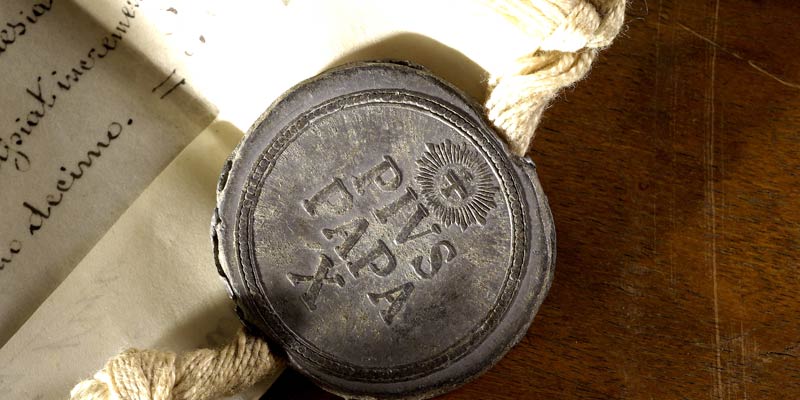
There is also an innocent use of the term “father”—with all its equivalents in various languages and traditions, in the family language of all times and in the form of an address to a leader in biblical times,[12]—which does not imply a cult of personality or the subjugation of individual conscience. But there is also a guilty use of the historical synonyms “pope, father, abuna, abbot.” Christ commanded us to look to no man as our father, master, teacher or instructor (Matthew 23:8-10), for only God is the true Father (Isaiah 63:16), and only Christ has the Magisterium—the supreme teaching authority of the Church. Unfortunately, Christian clergy have misappropriated these titles, and the Bishop of Rome has excelled in such pretensions.
(Most) Holy Father. The Bible calls “holy”: the heavenly messengers[13], the Jewish priests and Nazarites dedicated to God[14], the people of Israel[15] and all members of the Christian community[16]. Holiness is an essential Christian virtue[17], without which there is no salvation[18].
There is also an absolute holiness that defines God[19], Jesus Christ as God and Man[20] and, of course, the Holy Spirit, who is the Spirit of holiness[21].
Not even the Apostle Peter was called “Holy Father,” or “His Holiness.” What can such an address be if it is not pure blasphemy? Peter categorically refused any gesture of veneration from others (Acts 10:25-26) and was referred to by name (Simon the son of Jonah) or nickname (Cephas, or Peter) without even mentioning his office in the Church (of an apostle). The only title of honour that Peter and others accepted as apostles was “a servant of God and of the Lord Jesus Christ” (2 Peter 1:1; James 1:1; Titus 1:1), and the only form of address was “brother” (Colossians 4:9; Revelation 1:9; 2 Peter 3:15).
(Most) Blessed Father. Jesus called “blessed” the peaceful, the humble and the persecuted who obey God’s word, valuing them even more than His mother (Luke 11:27-28, cf. Luke 1:48). James calls those who endure “blessed” (James 5:11), Peter blesses those who are mocked because of Christ’s name (1 Peter 4:14), and John blesses those who will receive the first resurrection to eternal life (Revelation 14:13; 20:6). However, as a title and not as a well wish, the Bible calls the one and only God “the blessed God” (1 Timothy 1:11) or “the blessed and only Ruler” (1 Timothy 6:15). Therefore, such protocol titles given to mortals, whoever they may be, are nothing more than pious blasphemies that drive away God’s angels.
The Pontiff. “Pontiff” means “hierarch or high priest.” The term was used in the traditional religion of pagan Rome, but was also applied to Jewish hierarchs[22]. The College of Pontiffs in Rome was headed by the Supreme Pontiff (Pontifex Maximus or Summus Pontifex). With Caesar Augustus, this title and office were assumed by all the pagan Caesars, the persecutors of the Christians, and also by the Christian Caesars, who thus became apostolic heads of the Church as well as overseers of the other cults in the Empire.
Beginning with Gratian, the “most Christian” emperors abandoned the pagan title of Pontifex Maximus. Instead, it became customary for bishops to be called pontiffs until the 11th century. From Leo I (c. 440), the title Pontifex Maximus was adopted by the Pope, who was often called “Roman Pontiff” or “Sovereign Pontiff.” This metamorphosis is just one of the ways in which Imperial (popular) Christianity continued the tradition of pagan persecutors. Underlying these claims are two serious genetic changes in the old Church.
Firstly, the ministers of the Church began to think of themselves as priests in a different sense from the rest of the Church[23], as if they shared in the priesthood of Christ,[24] the only Mediator.[25] The Christian priesthood took over aspects of the pagan priesthood, assimilating them to the priesthood of the old Jewish covenant. The rituals bequeathed by Jesus multiplied and took on a magical-charismatic, mystical character, becoming clerical privileges and tools for manipulating an increasingly superstitious people.
Secondly, the leaders of the Church, originally called bishops (overseers), shepherds, teachers—and, as an honorary title, presbyters (seniors, elder brothers)—were divided into two ecclesiastical classes: presbyters (who became priests) and bishops (who became archbishops, pontiffs). From the 2nd century onwards, the local bishop became the lord and head of the church, to whom the presbyters (priests) were subordinate. The bishop had the keys to the right faith, the keys to worship, and the keys to church discipline, and it was said that if you were not in harmony with the bishop, you were cut off from Christ and His Church. The Bishop of Rome is no more than the winner (applauded and challenged at the same time) of the power struggle of the great bishops of the 2nd to 6th centuries.
Servant of the servants of God. When the Bishop of New Rome (John the Faster) received the title of “Ecumenical Patriarch” from the Emperor, the Pope (Gregory I) began to call himself “the servant of the servants of God,” in order to teach the Eastern Europeans a lesson in “humility,” as the Gospel teaches (Matthew 20:25-27). In time, this phrase became a title attached to the papal name and an honorific pronoun in the introduction to all encyclicals—including those bulls in whose wake many innocent people were disembowelled or burned.
Successor of Peter and Vicar of Christ. According to Scripture, the Vicar (deputy) of Christ is the Holy Spirit (John 14:16-18; Romans 8:9), who has been given to the whole Church, shepherds and laity alike. The authority of the “cornerstone” and of the “keys,” symbolically given to Peter, was in reality given to all the Apostles and to all the faithful, of whom Peter was already the representative[26],[27]. It was not an office for life and did not involve any immunities[28].
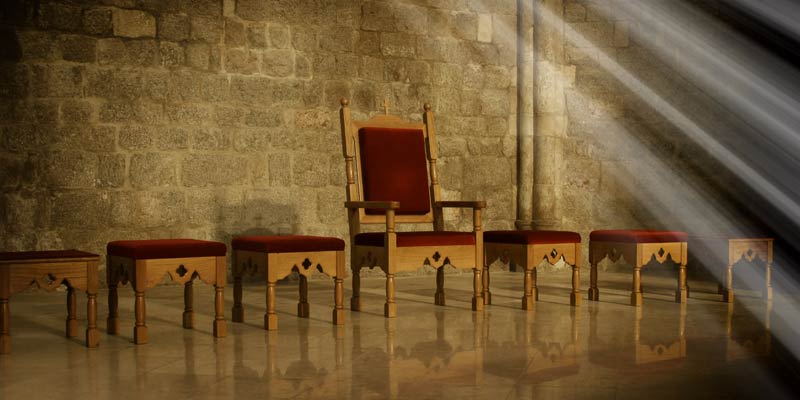
Peter was the representative of the apostles and the whole church only in the first part of his ministry (Acts 1:15; 2:14, 37). Later, Peter (Cephas) came second and James, the Lord’s brother, became the first representative of the whole Church[29],[30]. Most likely, Peter died a martyr’s death in Rome during his mission, after serving as an apostle in various churches in Judea, Palestine, Syria, and Asia Minor (1 Peter 1:1; 5:13). Later legends made him the first bishop of Rome and head of the church for life (and death). This political exegesis of Jesus’ words, similar to the Luciferian temptation (Matthew 4:8-10), was promoted by the Roman bishops Damasus (382) and Leo I (445), after which it became a standard claim of the papacy, though always contested.
The only word in Scripture that means both “Vice-Christ” and “rival of Christ” is the Greek term Antichrist,[31] used by John, alluding to Paul’s prophecy in 2 Thessalonians 2:3-19, which in turn is a commentary on Daniel 7-8.
The first pope to be hailed as a Vicar of Christ was Gelasius I (495). He was also the first to claim that the authority of the pope was equal to that of the emperor. It was well put that “the papacy…is the ghost of Peter, with the shadowy diadem of the old Caesars.”[32] Shortly afterwards (502), the Roman Synod and theologians on duty declared for the first time that since the pope was the successor of Peter, no one but God had the authority to judge him.
Similar pretensions developed over time until the famous Dictates of Gregory VII (1075), which affirmed the supremacy of popes over emperors, bishops and synods; the duty of princes to kiss the feet of the pope and the pope alone; the authority of the pope to create new laws. To crown these claims, the dogma of papal infallibility was proclaimed in 1870, causing controversy and division in the Church.
A variant of the title Vicarius Christi, less used today, is Vicarius Filii Dei (Vicar of the Son of God), present in the famous forged Roman imperial decree, the Donation of Constantine, produced in the 8th century to justify the imperial claims of the papacy. This title, like the whole forged document, was used to great political effect, and it was unchallenged for six or seven centuries, then used by some, despite criticism, until modern times. This title bears the number 666 as the numerological sum of its constituent letters, a fact discovered by the German linguist Andreas Helwig (1612), who associated it with the prophecy of Revelation 13:18.
Since the 8th century, the Pope has worn the tiara, which between 1314 and 1963 was adorned with three crowns (triregnum), now variously interpreted, but mainly symbolising papal authority: father of kings, governor of the world, and vicar of Christ. In the writings of the 18th and 19th centuries, the old interpretation of the triple authority was still maintained: “King of heaven, earth and the underworld.”[33]
Is there any higher authority in the universe? In Scripture, only Christ Himself[34] is given such authority and honour. In the altarpiece by the Eyck brothers in Gent, (Netherlands), there is an icon of God the Father in the centre, painted in the likeness of Christ, wearing a royal mantle and the three-tiered diadem. Above it, a Latin inscription proclaims Hic est Deus Potentissimus in Divina Maiestate.
The papal cult has been as explicit as possible in this blasphemous attitude, although nowadays papal claims use less striking language. The diadem and the sedia gestatoria (portable throne) have been abandoned by the most recent popes, foot worship and foot kissing are long gone, and the papacy no longer denounces heretics, but admits that the Church has made great mistakes and now asks the “separated brethren” to return.
Holy See, Apostolic See. As a bishop and therefore the (supreme) teacher of the Church, the Pope sits on a chair called the cathedra. Since the papacy is also considered a royal priesthood, the papal chair is also a real throne. The papal government is not only spiritual, but has a governmental apparatus (Curia Romana), consisting mostly of cardinals, with a secretary of state, its own military guard armed with halberds, and a corps of gendarmes equipped with modern firearms, batons, and gas, belonging to the Vatican State.
The Holy See has Congregations (true ministries), Tribunals, Councils, and Pontifical Commissions. It has diplomatic relations with more than 170 countries and its own bank, which operates commercially. The Holy See is a member, or at least an observer, of many international organisations. The Holy See is the administration consisting of the Pope and the Roman Curia, which maintains relations with world states and organisations. Vatican City is only “a minuscule support-State that guarantees the spiritual freedom of the Pope with the minimum territory.” It has fewer than 500 citizens, but about 18 million visitors a year.
This article is part of a series of three written by Florin Lăiu on the subject of antipapism and the possibility that the apocalyptic Antichrist is the papacy itself, the axis of historical Christianity. In the first part, the author familiarises us with the classical Protestant perception of the concept and prophetic figure of the Antichrist, evaluating the classical identification of the Antichrist with the papacy. In the second part, the analysis continues with a careful deciphering of the main biblical prophecies concerning the Antichrist. The final part concludes with an apocalyptic scenario that focuses on the role of the false prophet of Revelation 13 and the way in which the world will be deceived into worshipping the creature instead of the Creator.












